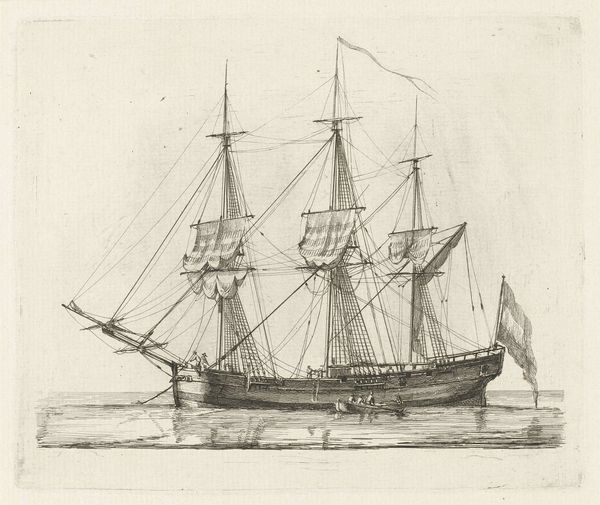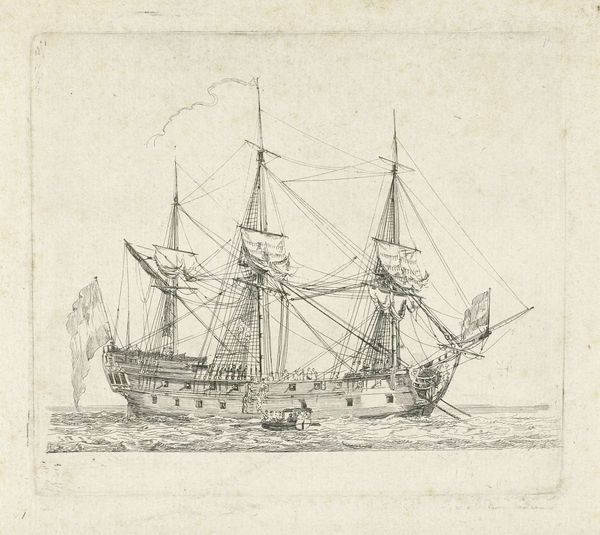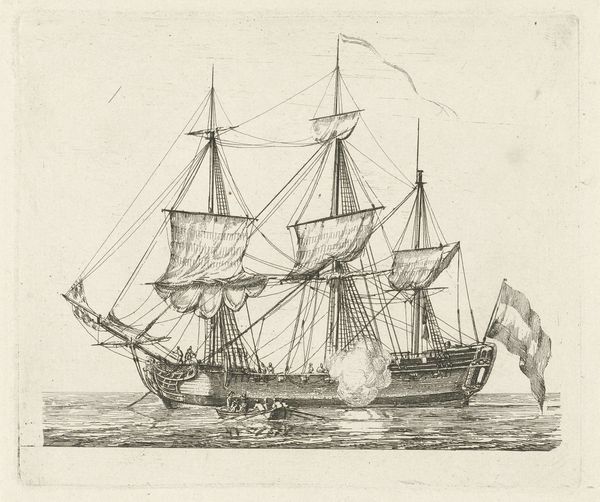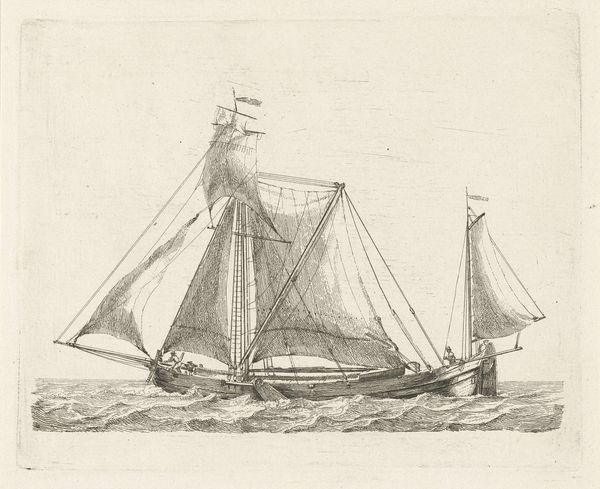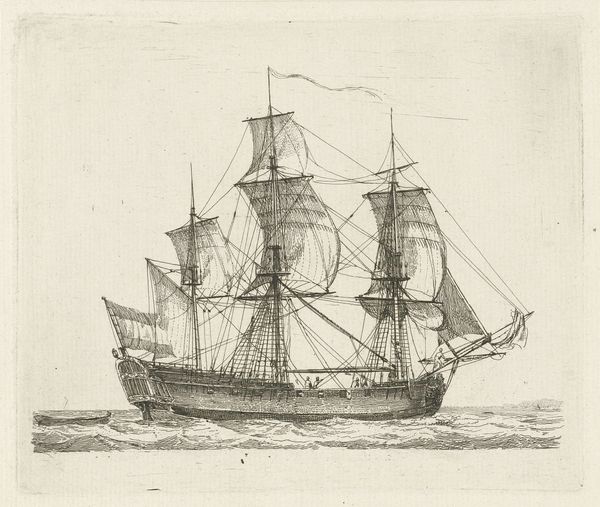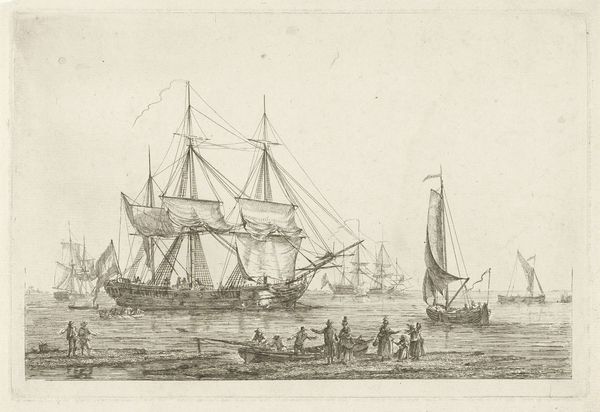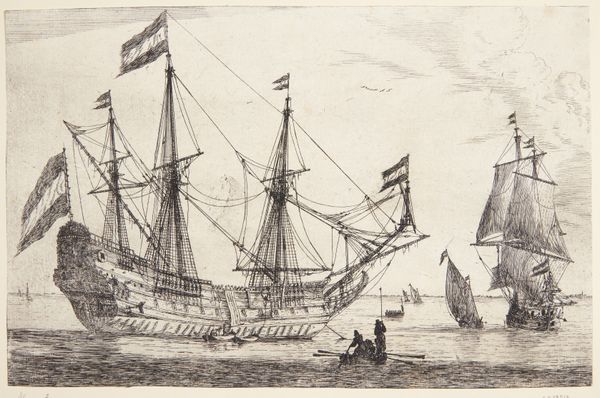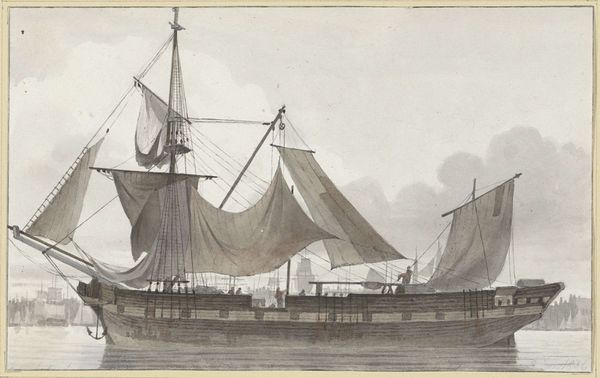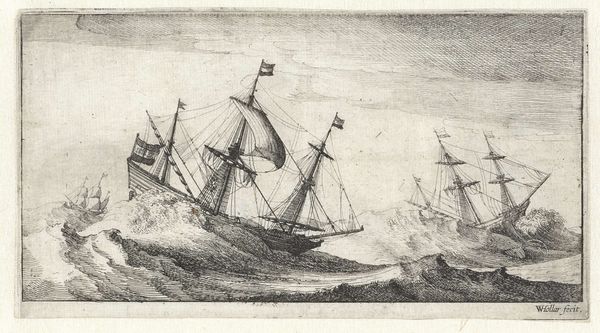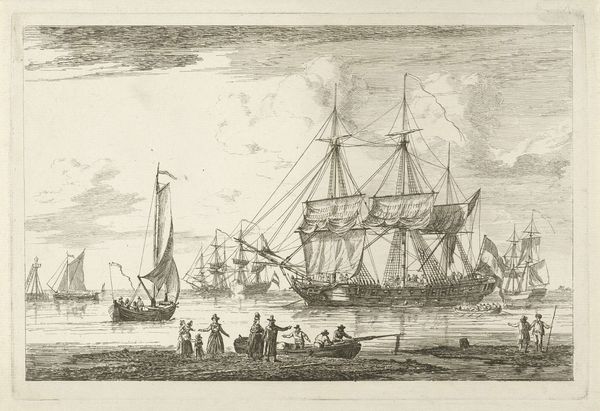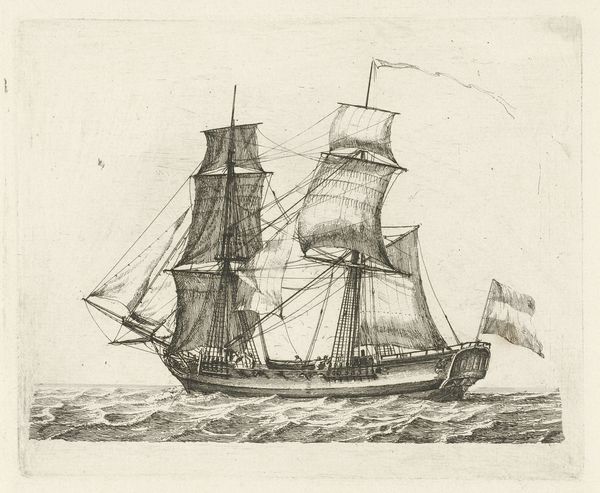
print, engraving
#
dutch-golden-age
# print
#
pencil sketch
#
old engraving style
#
landscape
#
cityscape
#
engraving
Dimensions: height 123 mm, width 153 mm
Copyright: Rijks Museum: Open Domain
Curator: Here we have Gerrit Groenewegen's "Het ontladen van een driemaster," an engraving from 1789 currently held at the Rijksmuseum. Editor: It has a somewhat hazy quality, doesn’t it? Almost dreamlike. I'm immediately drawn to the intricacy of the rigging. Curator: That haze speaks to the process of engraving. Groenewegen meticulously carved fine lines into a metal plate, imbuing the print with that softness. The scale also speaks to the social and economic forces that drove Dutch maritime power. Editor: Indeed. But look how the lines coalesce to define form. The way the masts point toward the sky create such a satisfying visual rhythm in spite of their density. And note the interplay of light and shadow, especially across the hull. The tonal variations bring such depth and dimension to the entire scene. Curator: Exactly! Think about what this “discharge” actually meant: goods flooding in, fueling colonial trade, creating an ever-widening gap between those who profited and those who did the physical labor. This print provides a lens through which to consider labor practices and global commerce of the era. Editor: It's a depiction that belies its historical underpinnings through a deceptively calm and placid visual presentation. There is almost a feeling of rest, where light touches every peak and contour so gently. This visual quiet is what brings the viewer in. Curator: Precisely! Groenewegen masterfully balanced technical precision with social narrative, transforming what might be a mundane scene of unloading a ship into a tableau imbued with implications about the era. Editor: An interplay between form and context—beautifully wrought yet heavy with untold stories. Curator: Indeed, the visual beauty draws us into the circumstances of its creation, offering layers of history through careful engagement with the materiality of life and art.
Comments
No comments
Be the first to comment and join the conversation on the ultimate creative platform.
